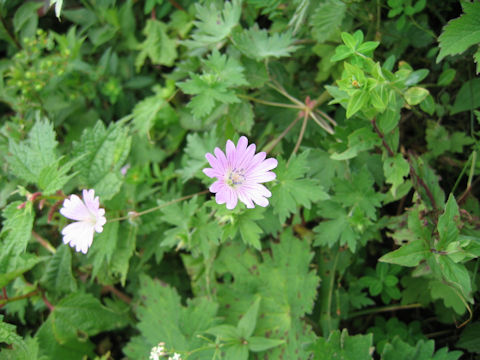 |






|

|
íªÌÅLíÅA{BÌQnE·ìEò§Æ ê§ÌÉRɪzµÄ¢Ü·BRÑÌnɶ¦A³ÍRO`WOZ`ÉÈèÜ·Bu¦¼Ó¤ëiÚÎIjvÌÏíÅ·ªASÌÉѪÈAäÓÐÉJoѪU¶µÜ·BV©çW²ëAÔsðLεÄWgFÌÔð穹ܷBÔÙÌæ[ªRô·é̪Á¥Å·B
|

|
tE\EÈtE\E®Ì½NÅAw¼Í Geranium yesoense var. lobato-dentatumBp¼Í èܹñB
|

|
The "Ibuki-fuuro" (Geranium yesoense var. lobato-dentatum) belongs to Geraniaceae (the Geranium family). It is a perennial herb that is endemic to Japan and is distributed in Gunma, Nagano, and Gifu prefectures and on Mt. Ibuki in Honshu. It grows in subalpine meadows and is 30-80 cm tall. It is a variant of the "Ezo-fuuro", but has fewer hairs overall and open hairs on the sepals. The pale reddish-purple flowers bloom from July to August on extended flower stalks. The petals are characterized by the three lobes at the tips.
|

|
ê§Ä´s¡ìuÉRvÉÄA2005N0725úBeB
|




